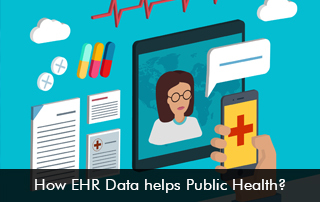Electronic Health Records (EHR) Software technology can contribute to enhancing population health in the United States. EMR data can be leveraged to better comprehend the level and distribution of disease, function, and overall population well-being.
What is public health?
Public health is a variety of disciplines concerned with the protection and enhancement of the health of communities and populations. It includes attempts to prevent diseases, promote health, and extend life by addressing diverse health determinants and executing effective interventions. Rather than focusing on individual health, public health practitioners seek to promote and protect the well-being of entire populations.
The primary goals of public health
- Disease prevention and control.
- Promotion of a healthy lifestyle.
- Responding to public health emergencies, for example, the COVID-19 pandemic.
- Health assessment
- Development of evidence-based policies.
To enhance health outcome levels, government agencies, community organizations, healthcare providers, and policymakers need to collaborate and make use of Electronic Medical Records (EMR) Software data.
The Role of EHR systems data to improve public health
Here are some ways in which EHR data can be used to benefit public health:
- Disease surveillance and outbreak detection: Healthcare professionals can use EMR data to monitor and detect the spread of diseases in real-time. By analyzing aggregated EHR data, public health officials can identify patterns and trends that may indicate the presence of an outbreak or an increase in the prevalence of a particular disease. Early detection enables prompt public health response and intervention.
- Epidemiological research: The data from the EMR solution is a major source of information for epidemiological research. Large-scale electronic health records datasets can be analyzed by researchers to explore the causes, risk factors, and consequences of various diseases. This study can help to establish evidence-based public health interventions, prevention initiatives, and policies.
- Health disparities and population health analysis: Through EHR data, health disparities and inequities across different populations can be identified. Public health officials can examine variations in health outcomes, access to healthcare services, and intervention effectiveness by reviewing demographic and clinical data from varied patient populations
- Public health emergency preparedness and response: During public health emergencies such as pandemics, EMR software data can support preparedness and response efforts. It can aid in identifying high-risk populations, tracking the spread of the disease, monitoring the effectiveness of interventions, and assessing the impact of mitigation strategies.
- Drug safety monitoring: Valuable electronic medical records data can help with the safety of vaccines and drugs throughout the post-marketing period. Public health organizations can spot potential side effects connected to particular drugs or immunizations by reviewing EHR data.
- Public health policy and planning: Public health policies can be effectively planned and developed by using EMR data. The data can unlock valuable insights about disease prevalence, and population health outcomes.
Boosting public health equity
Continuing efforts and initiatives to enhance the capture of race, ethnicity, and language data in the Electronic Health Records Software are crucial in measuring chronic disease burdens and improving public health. To aggregate data properly, healthcare providers need to use the appropriate ICD codes when they are documenting in the software system







